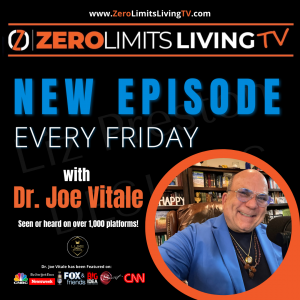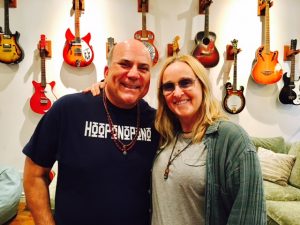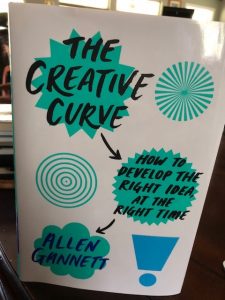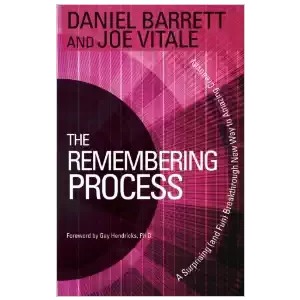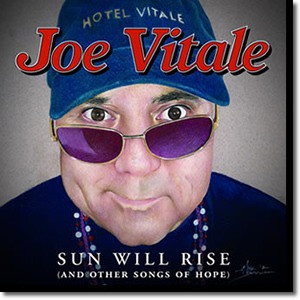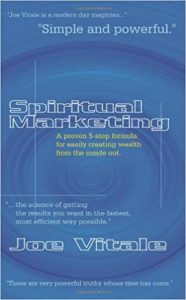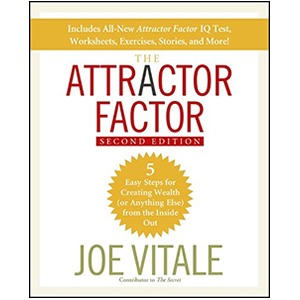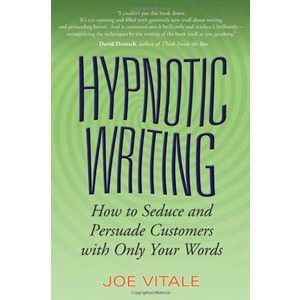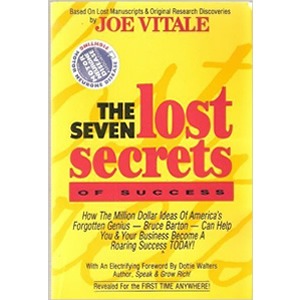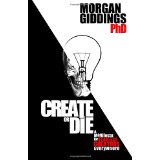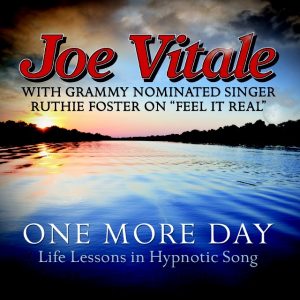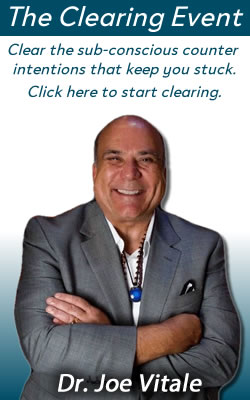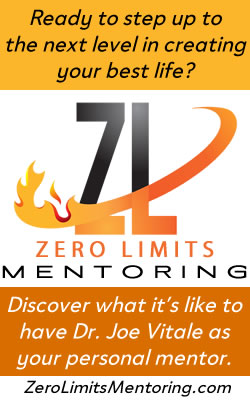Tag: jack london
The Astrohaus of Jack London
I miss typewriters.
I began my writing career in the 1960s punching keys on a portable Smith-Corona.
I found that writing on a typewriter forced me to focus.
If I didn’t concentrate, I’d have to retype the entire page, maybe even an entire chapter.
No cut and paste.
No easy deleting or rewriting.
It was the best writing tool existing at the time, and I loved it.
Computers circa 1990 made me lazy as a writer.
Having written 80+ books so far, I obviously learned to write on them.
But I found my mind a wee bit less concentrated. A part of me knew I could easily rewrite, delete, move things around. That’s cool. That’s efficient.
But I missed the intensity of typing.
So I started looking at typewriters.
I knew actor Tom Hanks had a collection, and I knew he bought from certain stores.
I started looking for a typewriter. I wanted to try it again.
Look what I found –
Astrohaus is a company offering modern day typewriters – portable computers with old style keyboards, small screens, and only one function: to let you write distraction free.
No apps.
No browsers.
No distractions.
They call their e-machines “Freewriters.”
I bought their Traveler version a year or so ago. I love portable tools, gadgets. The Traveler folds in half, making the e-typewriter even more portable. I’ve been using it and loving it.
A month or so ago Astrohaus announced a contest. Their email said:
1. Pick an author (any author) whose voice you think would best represent the Freewrite brand.
2. In 100 words or less, write why you chose that author.
3. In 100 words or less, write a product description for our Smart Typewriter (Gen3) in that author’s voice. Be creative. Think outside the normal e-commerce box. This description doesn’t have to read like a normal bulleted product description; we may even prefer that it didn’t. Immerse the reader in story, while still helping them understand what they’re buying.
They said the winner would receive a new Smart Typewriter (Gen3).
I already had their Traveler, but the contest sounded like a fun challenge.
So I entered it.
Here’s what I sent Astrohaus:
The author I chose:
Jack London. I chose the famous “Call of the Wild” author because I’ve always loved his writing style, riveting stories, and resilient characters. Jack wrote of people and animals struggling to survive. They didn’t always win (“Martin Eden” ended a suicide) but they sure gave it a fight. Jack would use anything to help him write more efficiently (he wrote 2,000 words every day). He’d grab the Smart Typewriter. He’d also get the Traveler, so he could carry it on his sailing trips to the South Seas and record his adventures with cannibals, pirates, and John Barleycorn.
The product description in my interpretation of Jack London’s style:
Sunrise. Ghosts walk. The storm ripped the sails. Decks broken. Men bleeding. Shaken. Dead. We now drift. The sky is calm. Birds flutter. Waves slap. It reminds me of the 1906 San Francisco earthquake. It took 45 seconds. Hell under a minute. Gasping holes of smoking nothingness where life once pulsated. The saving grace was my Smart Typewriter. I could record history. It’s the same on board this floating coffin. I can still type. I can write what happened to Captain Jacob right before the white bolt of electric fire struck our ship and turned rugged men into apparitions.
I didn’t expect to win, and didn’t, but the exercise was fun.
If you’re looking for distraction free writing, consider one of the e-machines from Astrohaus.
Or just get out a pen and turn off your phone.
Ao Akua,
Joe
The Shocking Truth About Creativity
I love creativity!
The sudden burst of a creative new idea electrifies me.
It’s an orgasmic rush to feel the birth of a new book, or song, or product, or online course.
I love it!
But there are a lot of misconceptions about creativity and being creative.
For one, most people sit around and wait for inspiration to wallop them over the head with an idea.
And they expect the idea to be fully developed and ready for release to the public.
But is that how it actually happens?
When I had my private songwriting lesson in the home of rock icon Melissa Etheridge, she advised, “Never write without being inspired.”
But how do you get inspired?
She went on to explain how she gets inspired.
She walks in nature, reads biographies, reviews songs and poems, and more.
In other words, she invites inspiration.
Jack London was more macho about it.
He said, “You can’t wait for inspiration. You have to go after it with a club.”
Considering he wrote over 50 books, and some (White Fang, The Call of the Wild, Martin Eden) are considered classics of literature, he knew what to do to nail creativity.
I’m a fan of inviting creativity, too.
I read, listen to music, allow my mind to reflect, sit in the hot tub and look at the stars, meditate and more
But here’s the thing no one seems to get.
Receiving creativity is one thing; developing what you receive is another.
For example, I was reading the new book The Creative Curve by Allan Gannett and began to get the idea of writing this post.
My mind was “ignited with an idea” and I let it float through my mind.
But then I went here and started explaining my idea.
I started writing.
And rewriting.
In other words, the sudden inspiration for an idea is a birth; but you have to grow and develop the idea into something that you can share.
Melissa Etheridge also told me that after I got an idea for a song, I “get” to develop it with music, melody and more.
She stressed the word “get.”
Some people complain that they have an idea for a book or a business, but now have to do the work to bring it into being.
You don’t “have” to do it, you “get” to do it.
It’s a shift in perspective.
With this very blog post, I’ll probably rewrite it fifteen times, or more.
Why?
Because receiving an idea and developing an idea are two different things.
For example, according to Gannett’s book, Paul McCarthy worked on his famous song “Yesterday” for almost two years. (!)
He didn’t just receive inspiration and release a song.
He wrote. Rewrote. Wondered.
Pondered. Worried. Stressed.
And worked some more.
The result is considered a masterpiece.
But it didn’t arrive in his mind as complete and finished.
All he received was the seed.
According to Gannett, “McCartney became obsessed. While he worked on it, the people around McCartney became sick of hearing about his ever-changing song in progress.”
After twenty months of this process, he created what we all know and love as the famous song, “Yesterday.”
Mozart didn’t receive finished music, either.
That’s another fallacy.
He got flashes of ideas and then worked at the keyboard to grind out what worked and didn’t.
I remember reading that the late Leonard Cohen often worked on a single song for ten years.
The shocking truth about creativity is that getting an idea is simple birth; you still have to raise it, much like making a baby is a thrilling explosion of delight, but now you have to change the diapers, feed it, raise it, and send it to school.
If you really want to be creative, you have to invite inspiration, and then go to work.
Take the seed and grow it.
When Daniel Barrett and I wrote the book, The Remembering Process, we wanted to share a new way to invite creative expression and creativity.
But after you receive a vision, or an inkling of what to do, you still have to develop it.
The creative idea isn’t the end.
The creative idea is the beginning.
And that’s where you “get” to be the parent of creativity.
For example, when I stated an intention to create the album, Sun Will Rise, I had to use everything to receive the ideas for each song.
But then I also had to write and rewrite those songs.
And then I had to get my Band of Legends together and record those songs.
And then we had to tweak and improve those songs in the studio.
And then we mixed them, and mastered them.
I didn’t just “get an idea” and quit.
This is the shocking truth about creativity.
Let me give you a maybe more startling example:
Back in 1997 or so I wrote a little booklet called Spiritual Marketing. I wrote it for my sister. I got the idea that maybe I could help her by explaining a process I had learned that took me from homeless to wealth. The little booklet explained a five step formula for attracting wealth. I never promoted it, and I kept it secret; only handing it out among friends and people I met and trusted. One of those friends was Bob Proctor, who convinced me this little booklet was a gem.
I could have stopped there.
A new print-on-demand publisher approached me around 2002 and asked if they could print something of mine. I gave them Spiritual Marketing. But before I did, I rewrote it, expanded it, added more content to it, and developed it into a more mainstream full length book. That book became an Amazon bestseller and was mentioned in a New York Times article.
And I could have stopped there.
Then, around 2005, a major publisher approached me about publishing Spiritual Marketing. But they didn’t like the title. So I changed the title, rewrote the book, added even more content to it, and released it as The Attractor Factor. It was that very book that got me invited to be in what became the hit movie The Secret.
But this evolution of an idea didn’t stop there.
The publisher loved the book but wanted to print a newer, expanded, more workbook oriented edition of it. So I again added to the book, enriched it, added quizzes and worksheets, and saw it published in 2008. That book is still a bestseller today.
Do you see how this process works?
I didn’t receive an idea and stop.
I received it, developed it, and kept developing it.
What I keep preaching is that life is a co-creation.
It’s a dance of energy.
You receive an idea or inspiration.
But it will just sit there unless you take action to breathe it into being.
I’m told I’ve written over 75 books.
I’m told I’ve recorded over 15 albums.
They all began as ideas from being creative, from allowing creativity; but none of them would be available had I take not taken action to create and manifest them.
So, how do you be more creative?
How do you practice creativity?
By inviting inspiration.
And by acting on that inspiration.
Now go forth and blossom.
You have work you “get” to do.
Go do it.
Ao Akua
joe
PS — Enjoy!
Hypnotic Stories
I’ve been writing about hypnotic stories since the 1990s.
My first e-book, Hypnotic Writing, described them.
I created Hypnotic Writing out of two passions of mine in the 1980s and 1990s: literature and copywriting.
Jack London, Mark Twain, William Saroyan and other great story telling authors fascinated me.
But so did great copywriters like Robert Collier, Bruce Barton, and John Caples.
After speculating on how each wrote their stories, I developed Hypnotic Writing as a way to explain it and teach it.
In short, I combined both styles of writing to create a third style.
I’ve written about this in many of my other early marketing books, including Buying Trances.
Of course, my book on P.T. Barnum, There’s A Customer Born Every Minute, is packed with hypnotic stories.
But I just discovered even more proof that hypnotic stories increase sales, influence, and more.
Let me explain:
I came across a project called Significant Objects.
The idea behind Significant Objects was to create a scientific study to see whether creative stories about mediocre objects could persuade people to buy near worthless stuff.
In other words, the authors would take a simple object that you might find at a garage sale for one dollar.
Then they would write a fictional story about it.
And then they would list the item, with the story, on eBay.
Surprisingly (or not), the item sold for many times its original price.
They did this for 100 objects.
The results were astonishing.
Objects that originally sold for around one dollar, were each placed on eBay with an accompanying made-up story.
The story triggered sales.
Those meaningless objects, now given meaning, sold for thousands of dollars in total.
For example, a Missouri shot glass, which looked like trash to me and originally sold for $1, had a fictional story written about it.
The story and photo were put on eBay.
That shot glass then sold for $76.
That’s a $75 profit from a hypnotic story.
That’s the power of a story.
The point being, the stories did the selling.
Of course, I’m not at all advising you to write fictional stories about your product or service.
But you have stories.
True stories.
They are from you (how you began your business or why) or from your customers (testimonials from satisfied people).
It’s those hypnotic stories that can increase your sales and influence.
In my book, The Seven Lost Secrets of Success, I advised revealing “the business nobody knows.”
In other words, tell the story behind you, your product, your service, and/or employee.
Your hypnotic stories will bring your business to life.
There’s a site you can visit http://significantobjects.com/ that fully describes the Significant Objects study, and their stories. It’s worth a look.
Their site opens saying, “Significant Objects, a literary and anthropological experiment devised by Rob Walker and Joshua Glenn, demonstrated that the effect of narrative on any given object’s subjective value can be measured objectively.”
Meanwhile, what’s your hypnotic story?
Ao Akua,
PS – My newest book is out this week: Dr. Joe Vitale’s “Greatest Law of Attraction Quotes.” You can find the printed and Kindle versions at Amazon. Open the book anywhere and see what “hypnotic story” begins for you. 🙂 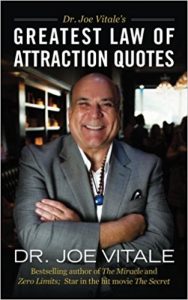
Create or Die
Bob Bly inspired me to become a copywriter back in the late 1980s.
His books, such as The Copywriter’s Handbook, always informed me in a practical way. I began my business career as a copywriter in Houston because of him. He occasionally wrote me snail mail letters of encouragement. I stay in touch with him, too.
Today he is the author of 85 books.
Eight-five!
I remember he once said he felt like he hadn’t produced much – that was back when he had “only” written fifty books – because he knew Isaac Asimov had written or edited more than five hundred books.
Five hundred!
Boggles the mind, doesn’t it?
I’m running as fast as I can to catch up with Bly and Isimov.
Right now I have about fifty books out, am working on two books, editing an autobiography from my father, completing three music albums, working on new presentations for mega-talks I am giving this year around the world, developing a new process for faster attracting, practicing my saxophone, the guitar, and the synthophone, reading more books a week than most people do in a lifetime, and of course still maintaining my fitness program, writing these blog posts, handling social media, promoting my past projects (which is a giant catalog), helping my Miracles Coaches, and more. (And, of course, keeping my relationships alive and well.)
Some say I’m a “force of nature.”
Others say I should switch to decaf. 🙂
Why so much productivity?
What drives a man like Bob Bly or me? What drove Asimov?
An answer is in the new book, Create or Die: A Manifesto for Fearless Creators Everywhere, by Morgan Giddings, PhD.
Her basic premise is that unless you keep creating, you begin to die.
Literally.
Die.
Life is designed to urge you to create, to move forward, to constantly expand, grow, develop, change and challenge.
In fact, challenging yourself is one of the best ways to maintain the exuberance of life.
According to Dr. Giddings, you don’t have a real choice.
Yes, you can decide to “do nothing” but life itself, being the great creative force it is, will move you off your bed if it has to get others to move you and it out the door.
And yes, as Asimov proves, you can create and still die.
But real living comes from persistent creating.
It’s not about the end result – as that will change again in time – but about creating.
There isn’t a “finish line” or even a “perfect” solution.
There will always be something else to create. Another problem to solve.
Life is about creativity. Period.
All of the problems in your personal life – and on the planet – can be resolved with creativity.
Whether oil shortage or climate change or anything else you are worried about, there is an answer, and that answer will come from creativity.
New problems will occur, but that’s just the nature of life’s ever expansion.
And that’s an opportunity for more creativity.
The wise approach is to challenge yourself by choosing your creative projects.
Let your passion lead the way.
Let your enthusiasm for an idea burn bright in your life.
One of my favorite sections in Dr. Giddings’ book is where she reveals the formula for attracting money.
It goes like this:
1. Use your creativity to create something of great value.
2. Use your creativity to effectively communicate the value of your invention, product, or service to others (market it).
That’s it.
She says everything else is just “playing the lottery.”
She also points out that you need a clear idea of what you want money for, and you need to be clear of any limiting beliefs about money, in order to actually have her formula work.
She writes, “Though a surface-level desire for money exists, it gets distorted and watered down by all these other beliefs that are floating around contradicting it. The contradictory beliefs dilute the singular focus that’s necessary for the kind of creative action that leads to results.”
I’m not sure what Bob Bly would say, and the late Asimov is no longer talking or writing, but in my own case, I am driven by the need to communicate what I am excited about.
It’s not about money – it’s about passion.
Money becomes the pleasant side effect of creating value and sharing it with the world in creative ways.
I am driven to create by the impulse of creativity itself.
My hunch is that everyone has this impulse — yes, even you — but most people are pros at rationalizing why they shouldn’t create.
Excuses are easy.
Wimping out is easy.
Just coasting is easy.
The challenge – and the voltage of life itself – comes from creating.
Ray Bradbury, the legendary sci-fi writer who wrote classic books and unforgettable stories – who wrote every day of his life – once said in an interview:
“There’s an Egyptian myth I heard about years ago that when you die as an Egyptian and you go off to visit the gods the first question asked of you at the gates of heaven is ‘Did you have enthusiasm?’ And if you answer negatively you don’t get in. My response to everything in life that I really loved has been enthusiasm.”
You most likely have a desire to create something.
A book, song, movie, business, product.
I have no idea what your secret creative urge might be.
But you do.
Dr. Giddings is giving you a wake up call.
Either create – or die.
And ignore the skeptics, critics, and cynics.
Dr. Giddings writes, “Cynicism is rooted in fear…Worse, it’s toxic to creativity. To be creative, it’s essential to express yourself fully, from your own unique vantage point.”
Critics and the like are living in fear and building themselves up by tearing others down.
Ignore them and pursue your dream.
“Creativity is an inside game,” Dr. Giddings writes. “It’s never about pleasing external critics. It’s about producing something that you feel is great, and then connecting with the right audience who will like whatever it is that you produced.”
I’m sure Bly and Isimov would nod in agreement.
Before I dismiss class today, here’s a final thought to consider:
One of my favorite authors during my development as a writer was Jack London, who once wrote –
“I would rather be ashes than dust!
I would rather that my spark should burn out
in a brilliant blaze than it should be stifled by dry-rot.
I would rather be a superb meteor, every atom
of me in magnificent glow, than a sleepy and permanent planet.
The function of man is to live, not to exist.
I shall not waste my days trying to prolong them.
I shall use my time.”
I agree.
Now, don’t you have something to create today?
Ao Akua,
Joe
PS – I didn’t want to write this post. I was tired, my eyes were blurry, I had other things to do. But the creative urge in me pushed from inside and said “Write this.” I obeyed. And guess what? I am not tired, my eyes are not blurry, and the other things I have to do are next. Follow your creativity. Live your dreams. Expect Miracles.



